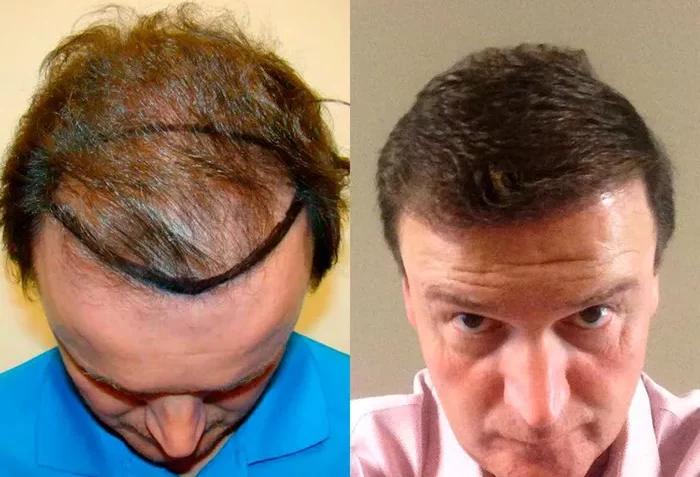Hair transplant surgery is a life-changing procedure for individuals struggling with hair loss. It offers a permanent solution by relocating healthy hair follicles to balding or thinning areas, restoring a fuller head of hair. However, patients often have questions about post-operative care and maintenance, including when it’s safe to resume shaving their heads. In this comprehensive guide, we’ll explore the factors influencing the timing of head shaving after hair transplant surgery and provide expert insights to help patients make informed decisions.
Understanding the Hair Transplant Healing Process
Before delving into the timing of head shaving post-transplant, it’s essential to understand the phases of the hair transplant healing process. After surgery, patients typically experience several stages:
1. Immediate Post-Operative Phase: In the first few days following surgery, patients may experience redness, swelling, and mild discomfort around the donor and recipient areas. Scabs may form as the transplanted follicles begin to heal.
2. Growth Rest Phase: After the initial healing period, the transplanted hair follicles enter a dormant phase where they may shed before entering the growth phase. This phase typically occurs within the first few weeks to months post-surgery.
3. Growth Phase: New hair growth typically begins around three to four months after surgery, gradually thickening and filling in over the following months. Full results may take up to a year to become apparent.
Understanding these phases is crucial for determining the appropriate timing for activities like head shaving post-transplant.
Factors Influencing the Timing of Head Shaving
Several factors influence when it’s safe to shave your head after a hair transplant. These include:
1. Healing Progress: The primary consideration is the healing progress of both the donor and recipient areas. Shaving too soon after surgery can disrupt the healing process and increase the risk of complications such as infection or damage to the newly transplanted follicles.
2. Hair Growth: Shaving too early can interfere with the natural growth cycle of the transplanted hair follicles. Waiting until the new hair has sufficiently grown and stabilized ensures that shaving won’t impede the growth or damage the fragile new follicles.
3. Physician Recommendations: Patients should always follow their physician’s post-operative instructions regarding grooming and care. Your surgeon will assess your individual healing progress and provide personalized guidance on when it’s safe to resume activities like shaving your head.
4. Type of Transplant: The technique used for hair transplantation can also impact the timing of head shaving. For example, with Follicular Unit Extraction (FUE), where individual follicles are harvested, the healing process may be faster compared to Follicular Unit Transplantation (FUT), where a strip of scalp is removed.
5. Personal Comfort: Ultimately, the decision to shave your head post-transplant should also consider your personal comfort level. Some patients may prefer to wait until they’re confident in the stability of their new hair growth before shaving, while others may feel comfortable doing so earlier.
Guidelines for Shaving Your Head After Hair Transplant Surgery
While the timing of head shaving can vary depending on individual factors, there are some general guidelines to follow:
1. Consult Your Surgeon: Before making any decisions regarding shaving your head, consult your hair transplant surgeon. They can assess your healing progress and provide personalized recommendations based on your specific situation.
2. Wait for Full Healing: It’s crucial to wait until both the donor and recipient areas have fully healed before shaving your head. This typically takes several weeks to months, depending on the individual’s healing rate.
3. Monitor Hair Growth: Pay attention to the growth of your transplanted hair. Once new hair begins to grow and stabilize, it’s a sign that the follicles have taken root, and it may be safe to consider shaving your head.
4. Be Gentle: When you do decide to shave your head, be gentle to avoid irritating the scalp or causing damage to the new hair follicles. Use a sharp razor and shaving cream, and avoid applying too much pressure.
5. Follow Post-Shaving Care: After shaving, continue to follow your surgeon’s post-operative care instructions to promote healing and optimize hair growth. This may include avoiding sun exposure, wearing protective headgear, and using recommended skincare products.
6. Patience is Key: Remember that hair transplant results take time to fully develop. Be patient and allow your new hair to grow and mature naturally before expecting to see the full aesthetic benefits of the procedure.
Conclusion
Hair transplant surgery offers a permanent solution for hair loss, but proper post-operative care is essential for optimal results. When it comes to shaving your head after hair transplant surgery, timing is critical. Waiting until both the donor and recipient areas have fully healed, and the transplanted hair has stabilized is crucial to avoid complications and ensure the best possible outcome. Consult with your hair transplant surgeon for personalized guidance and follow their recommendations for a safe and successful recovery journey. With patience and proper care, you can enjoy the benefits of a fuller head of hair for years to come.


